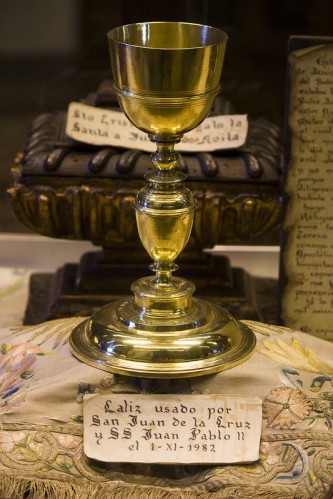 Once, now many years ago, I met the chalice. Of course, I had seen many, but I met one when I was at Beuron, when a friendly monk, who had charge of the sacred vessels, was showing me the treasures of the sacristy.
Once, now many years ago, I met the chalice. Of course, I had seen many, but I met one when I was at Beuron, when a friendly monk, who had charge of the sacred vessels, was showing me the treasures of the sacristy.
It stood on a broad foot, firm and secure on its base. Sharply the stem rose up, very slender. One felt the uprising, compressed, carrying power. Just above the middle was the clear-cut form of the knob or node; and then, where a smaller ring gathered the noble strength into a last concentration, there sprouted fine strong leaf-work, in which rested the heart of the chalice, the cup.
I then realised the meaning of the sacred symbol.
From sure, deep foundation rose the bearing shaft in well-ordered, collected force, and from it blossomed forth that form which is unique: to receive, to protect.
Oh thou pure symbol! Oh thou sacred vessel! In thy glittering depths repose the divine drops which are the inexpressible mystery of the awful, the sweet Blood, which is all fire, all love.
And the thought went on . . . . No, it was no thought, it was realisation, it was seeing. Does not the whole world stand there – all creation, which in the end has only one meaning, the Man, the Living One, soul and body, with His beating heart? . . . .
Augustine has spoken the great word: “The most profound essence of my human nature is this, that I am capable of receiving God.”
This liturgical meditation is taken from Guardini’s public domain work, Sacred Signs.
Photo credit: The Chalice of St. John of the Cross photo by Fr. Lawrence Lew, OP, Flickr.com Creative Commons License.
This article is from The Sower and may be copied for catechetical purposes only. It may not be reprinted in another published work without the permission of Maryvale Institute. Contact [email protected]

















